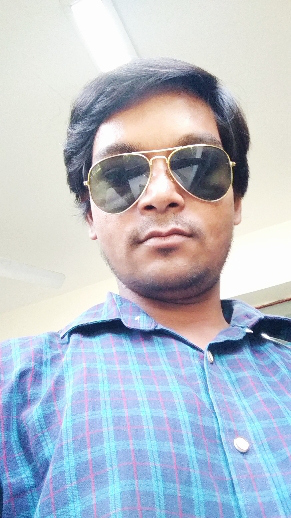Please Login To Continue
(Hindi)Fresnel Biprism
Lesson 9 of 17 • 3 upvotes • 9:08mins

Rajesh Kumar
Interference pattern and experiment by Fresnel Biprism. Demonstrated the phenomenon of interference between two coherent light beams. used single monochromatic light , also used to find the wavelength of the given light source. Biprism used for producing two coherent sources from a single source ,thin prism joined at the base to form Biprism, base angle of prism is very small .refracting angle is equal to 0.5 degree. monochromatic light placed parallel to the refracting edge. S1and S2 are the virtual image of source , is as formed by the prism A1BC and A2BC interference fringe formed on the screen .fringe width obtained on the screen is beta =Dλ/d as in young double slit experiment. :coherent and incoherent sources: Wave1 and wave 2 has initial phase difference Delta zero, remains constant in time then these are called coherent sources. if Delta zero changed randomly with respect to time known as incoherent. for producing interference pattern source must be coherent light emitted by atom in discrete steps for short time it become actived then inactive for 10 to the power minus 8 second .inactive condition wavetrain of several metres. path difference must be in centimetres for good interference pattern on screen. strictly monochromatic means well defined single frequency or wavelength must be a sine wave which has infinite extension. ordinary sodium vapour lamp has wavelength 589.00 NM and 589.6 NM . Spread in wavelength is approx plus minus 0.01 NM . the length of the wave train larger then spread in wavelength smaller .wavelength should be several hundred meter for good interference pattern. laser source is a good source of monochromatic . for laser source behave in a Cooperative manner. hence light is coherent. two independent laser sources can produce interference fringes.
(Hindi) Light Wave: Class 11 NCERT
17 lessons • 2h 53m
1
Light wave:Course Overview (in Hindi)
4:24mins
2
Light:Wave or Particle (in Hindi)
6:52mins
3
The Nature of Light Wave Part :01 (in Hindi)
7:13mins
4
The Nature of Light Wave Part:02 (in Hindi)
6:32mins
5
Huygens Principle (in Hindi)
12:34mins
6
(Hindi) Young double slit experiment
11:38mins
7
(Hindi)Optical path
10:04mins
8
(Hindi)Interference from thin film
7:32mins
9
(Hindi)Fresnel Biprism
9:08mins
10
(Hindi)Diffraction of light: Fraunhofer Diffraction
13:05mins
11
(Hindi) fraunhofer diffraction by circular aperture,Fresnel diffraction at a straight Edge
10:48mins
12
(Hindi) Limit of resolution, Scattering of Light,Rayleigh Criterion/ Law
14:21mins
13
(Hindi) Polarization of light
10:33mins
14
Polaroids, Polarization by reflection and refraction Polarization by Scattering
12:28mins
15
(Hindi) summary light waves-01
10:17mins
16
(Hindi) summary of light wave - 02
12:52mins
17
Numerical based on light waves
13:16mins